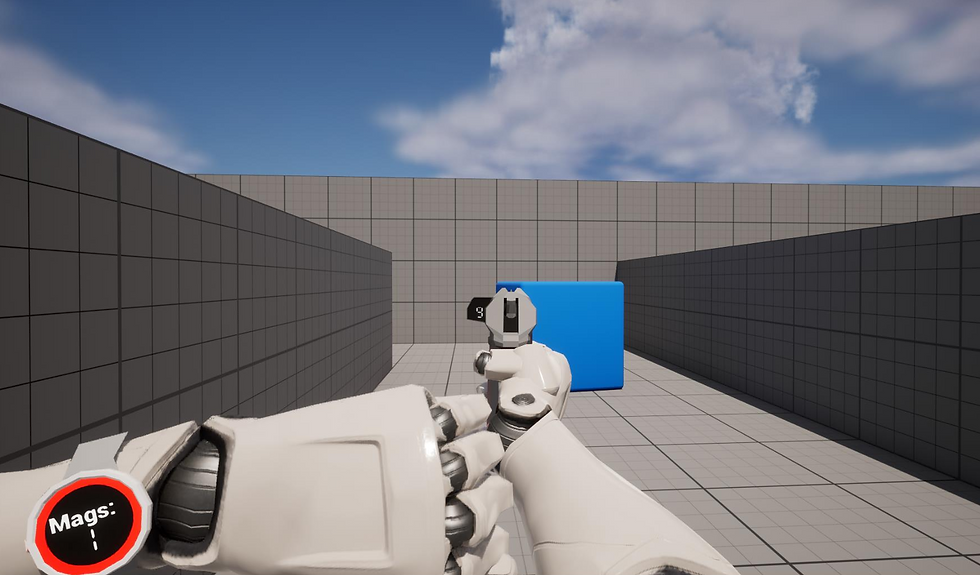Making a Sample Project for an RPG orientated FPS game - Nothing Left Under the Sea - Final Year Project
- bvieriu246
- Jun 6, 2024
- 3 min read
Updated: Nov 15, 2024
Full video explanation:
In this Sample Project, I made the following features:
Modular Main Menu
The main menu in this sample project is designed to be easier for a Game Designer to operate by hybridizing the editing method. The important part of the menus is kept in a free Common UI format; nothing is changed there, but everything else in the menu is controlled via a Data table.
A designer can create a custom small menu (the menu that appears inside the pop-up). This menu is responsible for creating the side tabs (for example, the tabs in the settings menu). Once this is done, the designer can record it in the menu data table, where it will appear automatically and inject the small menu that will then inject the side buttons.
Simple visual loop:
Write information in data table -> Main menu reads the data and creates the button -> pressing the button will open the specified small menu -> small menu injects side tab buttons on the right side
The menu also has an in-game version, which is a slightly enhanced version of the main menu pop-up tab. This was created to accommodate a few other tabs and features, such as the "quest board" section, which is intended to interact with the flow controller.
Timestamp:
Example of the "quest board", timestamp:
Modular Main Menu (deprecated)
There is a version of the main menu made in the normal Unreal UI format; this one isn't showcased, but it is present.
Story Flow Controller
For the more RPG aspects of the game, I decided to add a general flow controller for the story. This can be communicated with by any other actors.
It is presented in the form of an actor, which performs the actions in order, and a data table, which holds the order of when an event appears and/or activates.
The flow controller also contains a date system, which checks for a specific paper item in the player's inventory.
This works with the following systems:
-Dialogue System (if actor has the "Story" tag)
-Element System (if actor has the "Story" tag)
-Inventory System
-Menu System (quests are shown and hidden based on order of events)
Timestamp:
Dialogue System
The dialogue system is also made by a single actor. This actor is the calculator itself.
After the actor is placed, a designer can attach a correctly set up NPC actor (there is one already made, as an example) and cameras, and can manipulate the collision box already present in the calculator actor (editing transforms).
The data table dictates what the flow of the dialogue it, a designer can make the lines jump, display choices with different consequences and rewards and change cameras and emotions.
This works with the Inventory System. It can detect items and dispense items.
Timestamp:
Pipe Matrix Minigame
5x5 customizable pipe tile rotator puzzle
This puzzle contains the following tiles:
Simple pipe |
Simple curve L
Simple 3-way T
Simple crossing +
Obstacle X
Empty O
Timestamp:
Basic Story Actors
The project contains a basic story actor. This actor is supposed to be the parent to any story flow-related actors, such as doors (present in the sample) and item/weapon pickups (present in the sample).
These have a dark inverted mesh around them, which is meant to light up when you hover over them to showcase that they are usable.
Timestamp:
Weapon System
I did not showcase the weapon system customization process in a video, but it is also straightforward. Every weapon the player picks up needs to be registered as an item.
The inventory will go through the weapon data table and look for an actor component corresponding to the weapon (this can be copied from the other weapons; the basic custom events are already present, and the corresponding variables are transferred inside as well).
The weapon customization also has a special method of creating more specific weapons, with an unfinished laser arm as an example.
Timestamp for weapon test:
Minimal project info:
For this project, I had to hand-in the following:
Proposal (PowerPoint document)
Progress Review (PowerPoint document)
Product (the video and it was followed by a viva)
Project Report (attached PDF)





Comments